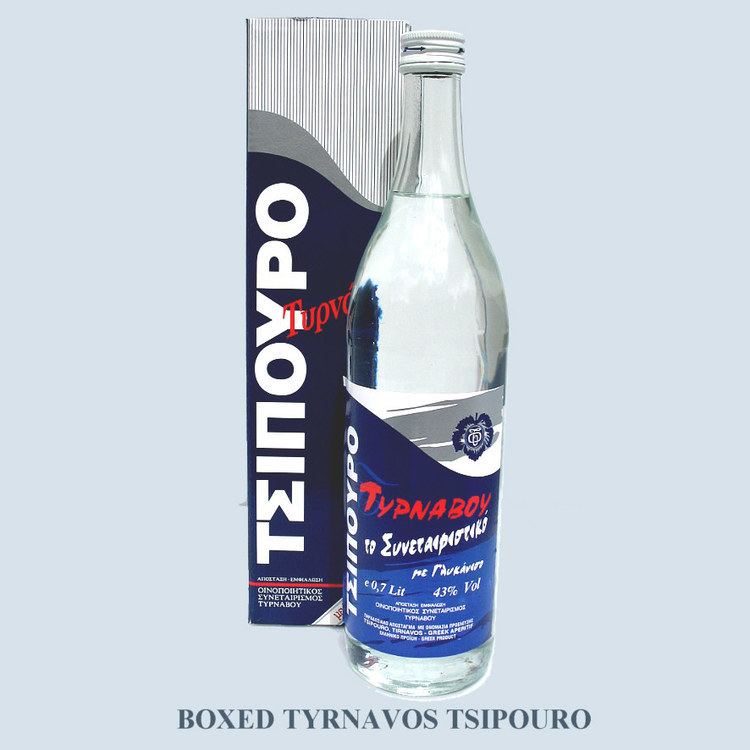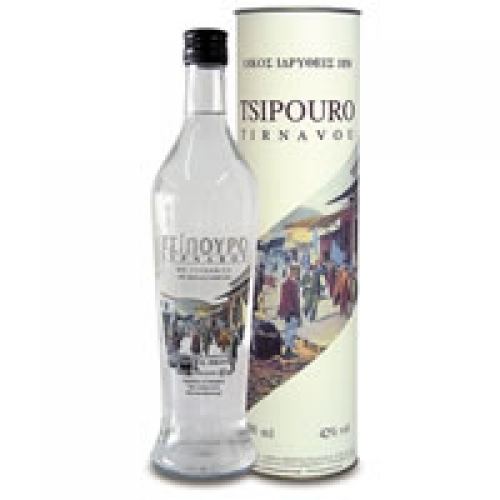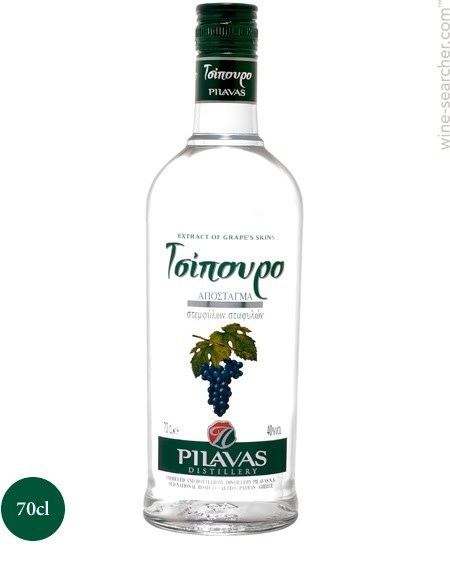 | ||
Similar Ouzo, Tsikoudia, Retsina, Rakomelo, Rakı | ||
Making of tsipouro 2010
Tsipouro (Greek: τσίπουρο) is a pomace brandy from Greece and in particular Thessaly, Epirus, Macedonia, and the island of Crete (where Cretans call it tsikoudia). Tsipouro is a strong distilled spirit containing 40-45% alcohol by volume and is produced from the pomace (the residue of the wine press). It comes in two types: pure and anise-flavored.
Contents

History

According to tradition, the first production of tsipouro was the work of Greek Orthodox monks in the 14th century on Mount Athos in Macedonia, Greece.
Method of production

Ripe dark grapes are passed through crusher/destemmers. The mass is left to settle for a few days, just enough to get fermentation started. Formerly, wine would be collected and only the solid residue would be used for tsipouro in an attempt to get the most out of the plant. This method is outdated and modern producers tend to use the whole grape mass, which is a huge improvement in quality.

In the next stage, the mass is fed into distillation units, where temperature and pressure are closely monitored. The first and last distinct batches (the 'head' and the 'tail') are discarded. Only the intermediate batch (known as the 'heart') is kept to make tsipouro. This process is repeated at least once more, giving a double or multiple distilled result.

Finally, the distillate is left to settle and mature in stainless steel tanks. It can also be aged in wooden barrels to give 'aged tsipouro', a relatively new beverage that can be compared to whiskey.
Serving
Depending on the time of year, tsipouro is used either as refreshment or as a hot beverage, and depending on the time of day, it replaces the drinking of coffee or wine. Tsipouro and tsikoudia, like all alcoholic beverages in Greece, are generally consumed at social gatherings.
According to Greek manufacturers, the best way to enjoy tsipouro is straight from the freezer. Some people prefer to either dilute with water or add ice.
Tsipouro is usually served in shot glasses with meze (a small side dish) such as nuts, dried fruit, raisins, cheese, olives, seafood, meat, halva, or paximadi (rusk).
In 2006, Greece filed a request for tsipouro to be recognized as a PDO (Protected Designation of Origin) product, which was granted later that year.
Relation to ouzo
Anise-flavored tsipouro is also available, produced especially in Macedonia and Thessaly. Anise-flavored tsipouro and ouzo have almost identical taste but vary enormously in their method of production. The alcohol used to produce ouzo is 96% ABV ethyl alcohol of agricultural origin (rectified spirit obtained from agricultural products) and therefore does not retain the flavours of the primary distilled products, whereas the lower degree of distillation of tsipouro allows it to retain the aroma of the pomace.
